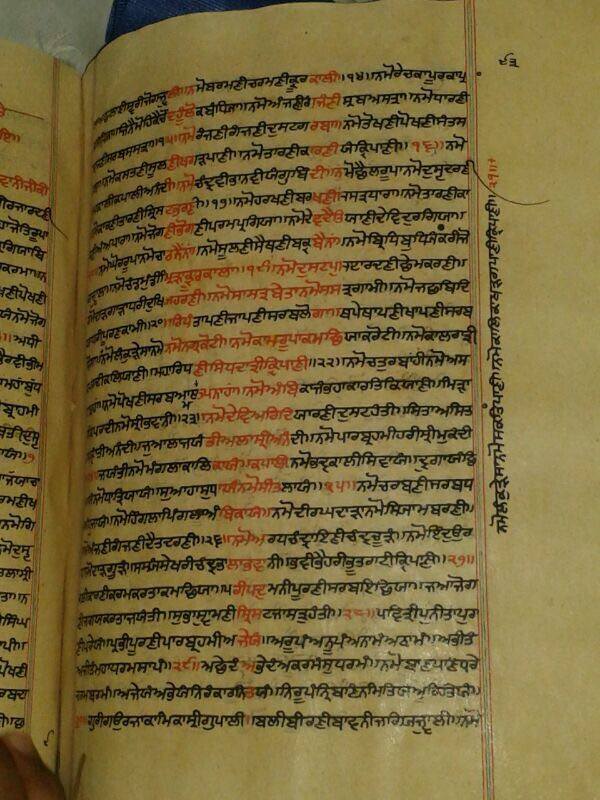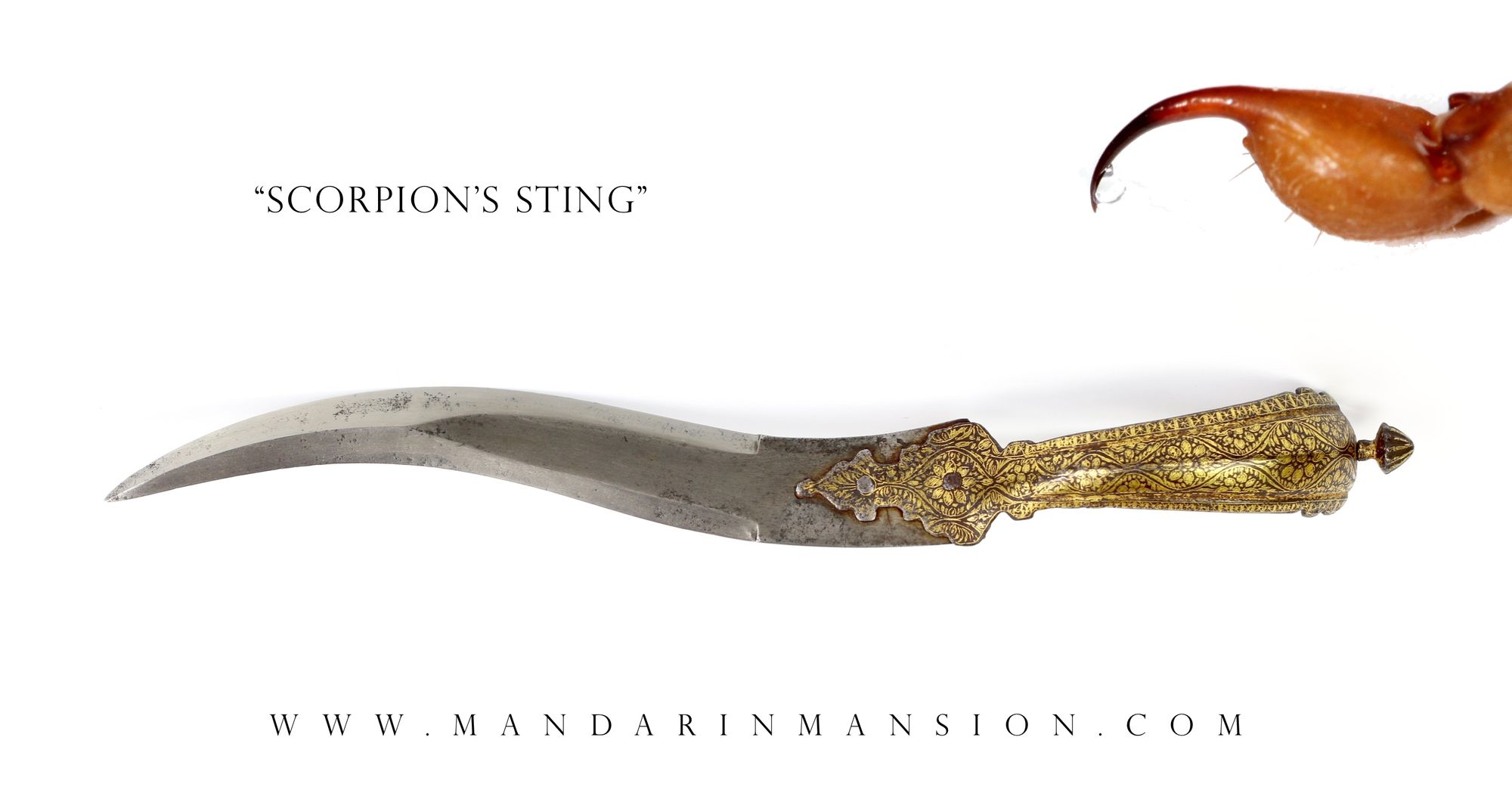11th Doharaa: "Thuhee Kataaree Dhaarr-Jum..."

Dhan Dhan Kalgidhar Maharaj, Chittey Baja Wale Paatshah, Neela-Ghorh Asvaar, Sarbans Daani, Dasmesh Pita Ji Sri Guru Gobind Singh Sahib Ji Maharaj
–
ਤੁਹੀਂ ਕਟਾਰੀ ਦਾੜ੍ਹਜਮ ਤੂੰ ਬਿਛੂਓ ਅਰੁ ਬਾਨ॥
Thuhee[n] Kataaree Dhaarr-Jam Thoo[n] Bichhoo-O Ar[u] Baan
ਤੋ ਪਤ ਪਦ ਜੇ ਲੀਜੀਐ ਰੱਛ ਦਾਸ ਮੁਹਿ ਜਾਨੁ॥੧੧॥
Tho Path Padh Jae Leejeeai Ra-chh Dhaas Muh[i] Jaan[u]
–
The Mehron Wale Steek tells us that Kataaree and Jam-Dhaarr are the same shastars [a kataar or punch dagger]. Jam-Dhaarr is synonymous with the the King of Death (Dharam-Raaj)... so these Shastar names repeated can be interpreted as Oh Vaheguru Ji! You are both the act of taking away life and the one who takes away lives (Actor and Action). Vaheguru is everywhere... in the process of birth, life, and death. For the warrior, death is reminded over and over again. When the warrior is reminded that Vaheguru comes as the assailant and also, through the act of striking then the warrior will become liberated through training the mind for battle. When battle actually occurs and they physically pass away, death is also seen as the Form of Vaheguru. Vaheguru is the last thing on their mind.
ਅੰਤਿ ਕਾਲਿ ਨਾਰਾਇਣੁ ਸਿਮਰੈ ਐਸੀ ਚਿੰਤਾ ਮਹਿ ਜੇ ਮਰੈ ॥
A[n]th[i] Kaal[i] NaaraaiN[u] Simrai Aisee Chinthaa Mein Jae Marai...
If you remember Vaheguru during your final moments, if you die in this focus...
ਬਦਤਿ ਤਿਲੋਚਨੁ ਤੇ ਨਰ ਮੁਕਤਾ ਪੀਤੰਬਰੁ ਵਾ ਕੇ ਰਿਦੈ ਬਸੈ ॥੫॥੨॥
Badhath[i] Thilochan[u] Thae nar Mukthaa Peetha[m]bar[u] Vaa Kae Ridhai Basai
Bhagat Trilochan Ji says: know that being becomes liberated,
as Vaheguru comes and lives in their heart
(Raag Goojaree, Ang 526)


In 2019, Sant Surjit Singh Ji Mehron Wale attended SYF Camp. Daas was introduced to them by Bhai Satnam Singh Ji. Sant Ji were inspecting a Kataar which belonged to another Gursikh. In this opportunity, they briefly explained ways that a Kataar can be wielded. If you were striking downwards then you would tuck in your bottom three fingers like this and keep your index finger on the spine of the kataar like this:

If you were striking upwards, then you would keep your pinky up against the spine of the Kataar like this:


There are various types of arrowheads. Not all arrows have pointed tips. This video features a crescent shaped arrowhead. The purpose of this arrow is to rip through an enemy's bowstring and thus, preventing them from firing arrows of their own.
Pathee is used in south asian languages nowadays synonymously with the word husband. This is true but in the past, this word had a deeper meaning. Kings were referred to as Path[i]. Seen as the protectors and the honour of the kingdom. For example, Kavi Santokh Singh Ji refer to Raja Udhai Singh Ji as Kaithhal-Path[i]. Path[i] is a shortened version of Pathee. You will see these used interchangeably in Gurbani as well. The husband was the protector & the honour of the grehasth (home). Guru Sahib is the Protector of the Land upon where we live, the Protector of our Homes, the Protector of our Bodies & our Hearts.
In 2011 when riots were happening in the London area of UK, Sikhs came to protect their community.
Likewise, when farmers were protesting in Delhi, the Nihung Singhs stood in protection of protesting civilians in front of government force.
Pandit Narain Singh explains: Whoever asks the Shastar-dhhaaree for help (enters their sanctuary), the Shastar-dhhaaree will be able to protect them... it is the duty of a Shastar-dhhaaree to protect those who ask for help.
If you ask any Sikh in their local police force or in their national army why they chose their profession... they almost feel like they don't need to explain much as to why. It is self-explanatory.
–
Maharaj, these Shastars are all You. Let us meditate upon them as Your Form!
Please forgive any mistakes, please send suggestions/corrections.

